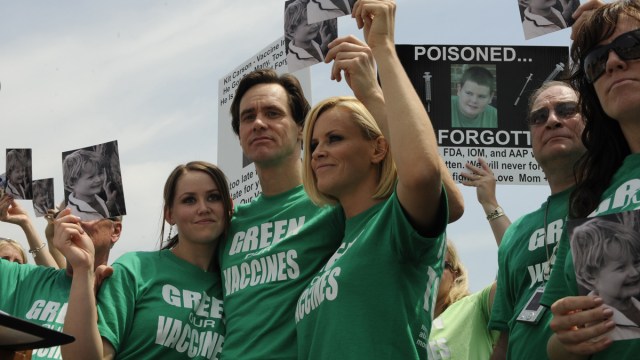Science Communication Outside the Box: A Multidisciplinary Approach to Engaging the Public

In the first of several posts on the AAAS meetings held this month in Washington, DC, Simone Lewis-Koskinen reports on a panel at the conference that encouraged scientists to “communicate outside the box.”–Matthew C. Nisbet.
Washington D.C.’s Convention Center played host to the 177th American Association for the Advancement of Science annual meeting February 17-21, convening thousands of scientists, engineers, policymakers, educators, and journalists from around the world to discuss the latest developments in science. Many of the panels reflected the expanding role science plays in shaping society, emphasizing interdisciplinary approaches to science communication. This year’s Science and Society track addressed current shortcomings of the communication process and unconventional methodologies that are changing the way we think about science communication. New strategies seek to close the gap between the scientific community, the media and the public by facilitating interaction and engaging new demographics as communicators and audiences.
Friday’s Communication Outside the Box panel profiled three innovative multidisciplinary communication models emblematic of the next generation of science communicators. Each approach deviates from the traditional deficit communication model, the belief that public opinion is governed by a knowledge deficit whereby simply increasing public understanding motivates positive attitudes toward science. In other words, by increasing the amount of simplified, or popularized, scientific information that is presented to the public, scientists will increase science literacy and subsequently public support. By facilitating dialogue, applying effective imagery and convening different demographics, each of the three methods reach beyond the one-way transmission model to create channels of communication between scientists and the audience.
Dialogue approach
The BBC’s Naked Scientist science radio and podcast series applies a dialogue approach to science communication, engaging the audience throughout the communication process to make science more accessible. The self proclaimed media-savvy group use a combination of lectures, interviews and at-home experiments to promote basic science through popular media and active dialogue platforms.
Every Sunday evening, Chris Smith and his cohort of naked scientists answer questions from the audience to demonstrate scientific principles, ranging anywhere from “How does a light bulb work” to “How fat do you need to be to stop a bullet with your gut?” The series applies a conversational look at science, attempting to bridge what the producers consider to be adivide between the scientific community and the public, relating abstract scientific concepts to common experiences. The show’s comedic slant and inclusive framework helps “gain the confidence of scientists while including the rest of the population,” says Smith.
Visual approach
The power of imagery in communicating science goes far beyond a well-made bar graph. Images provide the observer with additional contextual association, drawing upon visual cues to enhance understanding. For example, the iconic image depicting the progression from knuckle walker to upright man is universally synonymous with evolutionary theory, conveying a complex set of principles in a single frame. The use of visual metaphors to enhance understanding is a powerful tool in a scientist’s arsenal, drawing upon the observer’s existing level of knowledge to integrate and apply new information.
In recognition of the linkages between visual interpretation and cognitive understanding, Rikke Schmidt Kjærgaard works to connect the public with scientific theory at the interface between art and science. Kjærgaard has worked on projects replicating photosynthetic molecules with lego models and reconstructing an image of mitochondria on a paint-by-numbers mural, using visual tools to communicate science. These projects allow the audience to physically interact with science, reinforcing their understanding of the concepts through experiential learning.
Participatory approach
Students are often looked to as the key demographic for science literacy programs, the next generation of scientists and policy makers. Patricia Osseweijer’s Imagine Program at Delft University aims to engage different communities in the scientific process, pairing scientists with students on projects in developing countries around the world. The high school competition works to foster a sense of enthusiasm and appreciation for science, connecting global issues with innovation.
Scientists submit proposals that are then adopted by groups of students who develop viable business plans to be voted on for selection. Of the five finalists, one project is selected per year for completion. This participatory model creates the educational mechanism to directly engage students in applied science projects. The program integrates multiple disciplines and backgrounds to work towards a common development goal while promoting science learning, creating a “third space” for science education that concerts formal science education with contextual based learning
Next steps
While more and more scientists are applying these new methods of communication, the community as a whole has yet to fully adopt and incorporate these practices. To facilitate implementation, scientists need guidance on how to determine the most appropriate communication model(s). To begin, scientists should ask themselves:
The answers to these questions will guide the selection and application of communication strategies catered to the needs of the scientist.
By applying new approaches to communicating about science in society, these panelists aim to foster new scientific discovery and innovation.
–Guest post by Simone Lewis-Koskinen, a Masters candidate in the Environmental Science program at American University. Prior to attending AU, she received a BS in Marine Biology and a BA in French Language and Literature from the University of Maryland, College Park.
This post is part of the course “Science, Environment, and the Media” taught by Professor Matthew Nisbet in the School of Communication at American. See also other posts on the climate change debate by Ms. Lewis-Koskinen and members of her project team.





